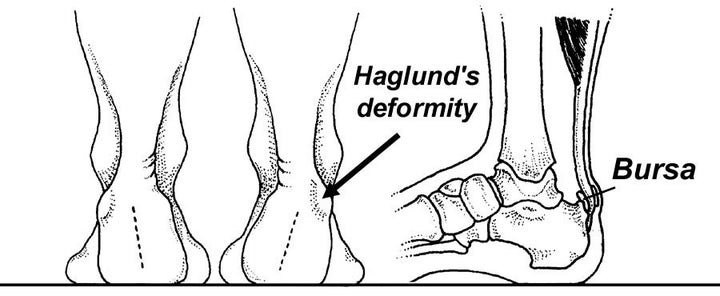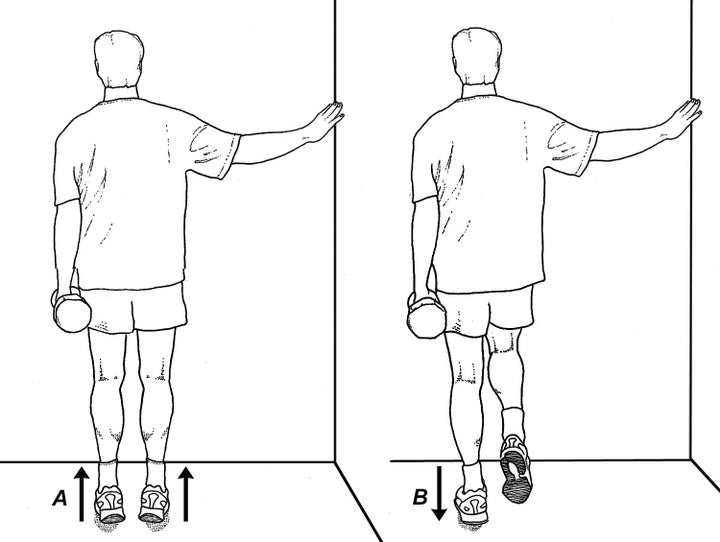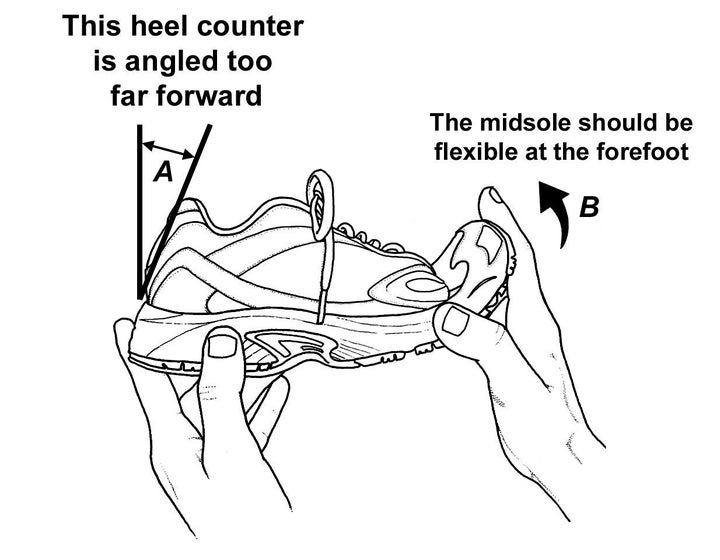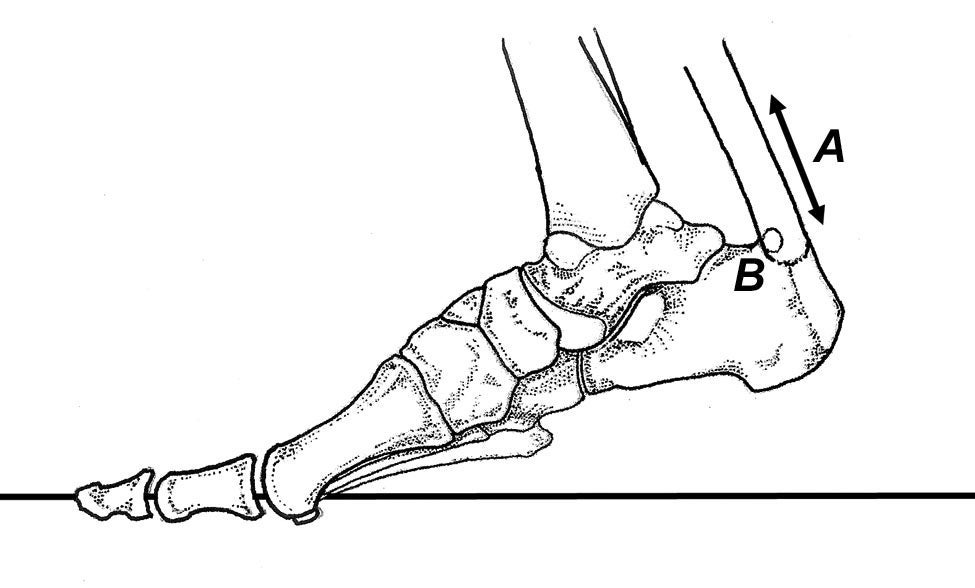While the Achilles tendon may be injured in several different locations, one of the worst running injuries occurs when the Achilles is damaged directly at its attachment on the heel. With this injury, you feel pain directly on the back of the heel, particularly if you press at the point where the Achilles tendon attaches to the heel bone. Referred to as an insertional Achilles tendinitis, this type of Achilles injury is notoriously difficult to treat.
In a study evaluating the success rate associated with conventional eccentric exercises, only 32 percent of athletes presenting with insertional Achilles tendinitis improved over a 12-week training period. This compares to the 80–90 percent success rate when the same exercises are used to treat non-insertional Achilles injuries. This frustrating injury is more likely to occur in high-arched, inflexible runners, particularly if they possess a Haglund’s deformity.

Counterintuitive Location
Until recently, researchers believed the biomechanical cause for the development of insertional Achilles tendinitis was pretty simple: Excessive running causes the Achilles tendon to break down on the back portion of the Achilles attachment, where pulling forces are the greatest. While this makes perfect sense, recent research has shown that just the opposite is true: The Achilles tendon almost always breaks down in the forward section of the tendon, where pulling forces are the lowest.
By placing strain gauges inside different sections of the Achilles tendons and then loading the tendons with the ankle positioned in a variety of angles, researchers from the University of North Carolina discovered that the back portion of the Achilles tendon is exposed to far greater amounts of strain (particularly when the ankle was moved upward) while the forward section of the tendon, which is the section most frequently damaged with insertional tendinitis, was exposed to very low loads. The authors of the study suggest that the lack of stress on the forward aspect of the Achilles tendon (which they referred to as a tension shielding effect) may cause that section to weaken and eventually fail.
Eccentric Treatment
The treatment of an Achilles insertional tendinitis should thus be to strengthen the forward-most aspect of the tendon (after rest has reduced swelling in the sheath around the tendon). This can be accomplished by performing a series of eccentric load exercises through a partial range of motion. It is particularly important to exercise the Achilles tendon with the ankle pointing down as far as possible (i.e., standing way up on tiptoes), because this position places greater amounts of load on the more frequently damaged forward portion of the tendon.

To do the exercise: Standing on a level surface while holding a weight with one hand and balancing against the wall with the other, raise both heels as high as you can (A) and then slowly lower yourself on just the injured leg (B). Do three sets of 15 repetitions are performed daily on both the injured and uninjured side. Use enough weight to produce fatigue.
Compared to conventional Achilles exercises where the loaded heel is lowered below level, the partial range Achilles exercises have considerably better outcomes. In a pilot study of 27 people who had been suffering with insertional Achilles tendinitis for more than two years, nearly 70 percent responded favorably to the partial range of motion exercises in just 3 months.
Another factor to consider when managing insertional Achilles injuries is that the heel counter of the running shoe should not contact the damaged portion of the Achilles insertion. Over the past few years, many running shoe manufacturers have added a forward angulation to the upper portion of the heel counter that causes it to project directly into the Achilles tendon. This addition often pushes into the back the Achilles insertion and causes chronic inflammation, particularly if a Haglund’s deformity is present. Those with insertional Achilles problems should look for sneakers that do not contact the Achilles insertion. A simple alternative is to cut off the upper back section of the heel counter so it no longer touches the tendon.

It is also important to pick a running shoe with a flexible midsole since a stiff midsole transfers more strain into the Achilles. It’s easy to assess the flexibility of a running shoe by bending the shoe at the forefoot. Because running shoes bend with anywhere from 5 to 30 pounds of pressure, select a shoe that bends with the least resistance.
The final consideration when managing insertional Achilles injuries is that you should avoid taking common anti-inflammatories, such as indomethacin and celecoxib, which have been recently shown to significantly reduce tendon-to-bone healing in laboratory animals. Although effective for pain relief, the reduced tendon-to-bone healing increases the likelihood that an insertional Achilles injury will become chronic. Rather than temporarily reducing inflammation with drugs, the preferred approach is to correct the problem by strengthening the tendon with exercises.
****
Tom Michaud has been treating elite and recreational runners in the Boston area for more than 30 years. He is the author of several books on clinical biomechanics and has developed a range of products for managing sports injuries and improving performance. His work can be found at www.humanlocomotion.org.
This article was adapted and updated from one originally published by Competitor magazine.


